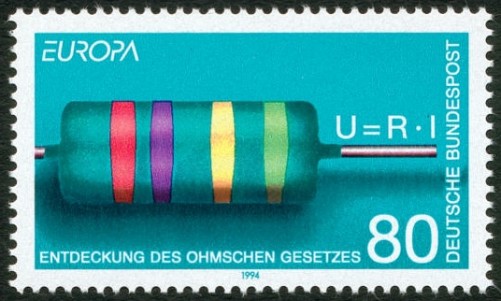Georg Simon Ohm Preferred Playing Billiards - a Short Biography
Volta, Ampère, Ohm — we use their names all the time, but what do we really know about the people who laid the foundations of modern electronics? In this article we will (briefly) explore the life of Georg Simon Ohm.
The two boys were taught mathematics, physics, chemistry, and philosophy by their father Johann Wolfgang Ohm, a locksmith and autodidact who would have loved to be a scientist.
Prefers playing billiards
G.S. goes to university but prefers playing billiards over studying and consequently his father sends him out in the world to make a living on his own. And so he does, albeit modestly, roaming around as a teacher and private tutor. Eventually he comes back to the University of Erlangen to obtain his Ph.D. in 1811, the same year as his younger brother Martin.In the shadow of his brother
Martin enters a career in mathematics that takes him smoothly to a professorate at the University of Berlin, but G.S. is not so lucky and in order to survive he has to continue teaching at low-prestige schools, notably in Bamberg and Cologne. All this time Georg Simon Ohm dreams of a real job at a real university, like his successful younger brother, but he never manages to secure one.
Act like a scientist to become one
At this point in his lonely, unmarried, unhappy life G.S. concludes that in order to become a scientist he has to act like one and so he starts experimenting and publishing his results. Inspired, like André Ampère, by the Danish physicist Hans Christian Ørsted who discovered in 1820 that a magnetic needle is deflected by an electric current nearby, G.S. concentrates his attention on electricity and magnetism.Georg Simon Ohm publishes his first paper
His first paper, published in 1825, investigates the relationship between the decrease in the electromagnetic force exerted by a current-carrying wire and the length of the wire. Other scientists like Antoine-César Becquerel (not to be confused with his grandson Henri) and Peter Barlow where active in the same arena trying to formulate the law that described the phenomenon correctly. Barlow came close, but G.S. nails it by introducing the concept of internal resistance of a battery. This brilliant insight not only results in his famous law, but it also allows him to solve many unanswered questions that had eluded researchers for years.Ohm’s theory of electricity
In 1827, like André Ampère, Georg Simon Ohm presents his theory of electricity in his masterpiece “Die galvanische Kette, mathematisch bearbeitet” (The Galvanic Circuit Investigated Mathematically). It is quickly adopted by the scientific community, except in Germany where physics is non-mathematical. So, despite his fame and stature, G.S. still can not get a job at a university. His brother’s reputation of “dangerous revolutionary”, earned following a disagreement with the ministry of education, may have had something to do with it too.A sort of happy ending
At the end of his life even the Germans could no longer ignore the importance of Georg Simon Ohm’s work and so, in October 1852, he obtains the chair of physics at the University of Munich, less than two years before his death.More biographies
Alessandro VoltaAndré-Marie Ampere
James Watt
Michael Faraday

